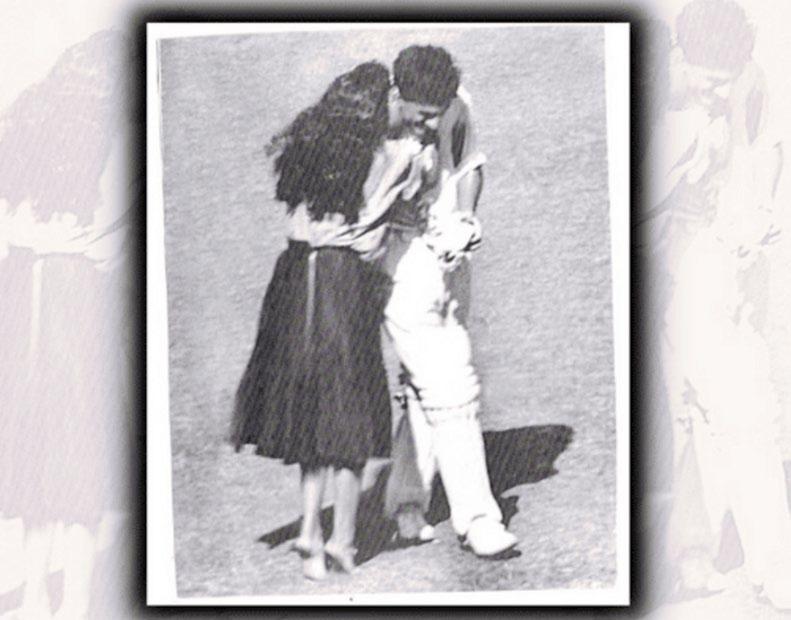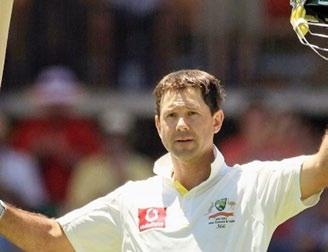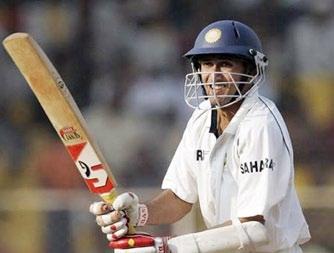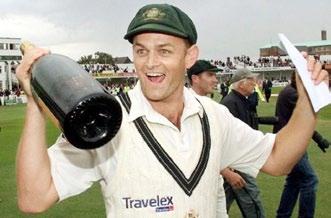
6 minute read
INDvAUS: Quirky trivia
from 2023-02 Melbourne
by Indian Link
BY KERSI MEHER-HOMJI
As a serious cricket tragic, I have witnessed many Tests and One Day Internationals, both live and on TV, in the last seven decades. One incident, however, remains unique. It took place 63 years ago, and I was on the sidelines at Brabourne Stadium in Bombay as it happened, watching India play Australia.
India’s handsome batter Abbas Ali Baig (then aged 20) had just scored 50 and evaded a loss to Australia, when a pretty young girl ran out to him.
“I was returning to the pavilion at tea when this girl jumped the fence and kissed me!” Abbas would recall years later. The incident inspired a Cadbury’s ad, which sources tell me, is one of the top three Indian advertisements of all time. (You may have seen it revived late last year – with genders reversed: the batter is a woman, and the (near) kisser is male. That’s right, no kiss this time!) n Former Australian off spinner Tim May was born on 26-1-62, a palindrome date. He must be popular both in India and Australia as 26 January is India’s Republic Day as also Australia Day. n India’s Sunil Gavaskar and Australian leg spinner Bob ‘Dutchy’ Holland have something in common. Both named their son Rohan after the West Indies master batsman Rohan Kanhai. n Steve Waugh was caught by India’s wicketkeeper Parthiv Patel (aged 18) off fast-medium Irfan Pathan (aged 19) in the first innings of the January 2004 Sydney Test. The veteran Waugh, then aged 38, had fallen to two teenagers whose combined age (18 + 19 = 37) was less than his. n In the 1977-78 Melbourne Test against n Forty years later in the February 2017 Pune Test against India, Australia’s leftarm spinner Steve O’Keefe had identical figures of 6 for 35 and 6 for 35. n How much difference can two years make? Ask Virat Kohli. Against Australia in Australia in 2014-15 he amassed 692 runs at an average of 86.50 hitting four centuries (highest score 169) in four Tests. Against Australia in India in 2017, he struggled to 46 runs at 9.20 in three Tests, highest score 15. n We can imagine the turbaned and bearded Indian left-arm spinner and right-hand tail-end batsman Maninder Singh asking himself: Why me? It must be a case of déjà vu for him. In the 1987 World Cup match against Australia at Chennai on 9 October 1987 he was bowled by Steve Waugh off the second last ball as India lost by one run. A year ago, on 22 September 1986 on the same venue, he was dismissed off the last ball of the match from Greg Matthews in the tied Chennai Test. n Two Indians scored over 300 runs in a single Test in the 2003-04 series in Australia: Rahul Dravid 305 for once out (233 and 72 not out) in the Adelaide Test, and Tendulkar 301 without being dismissed (241 not out and 60 not out) in the Sydney Test. n Other tourists to notch 300 in a Test in Australia were Englishmen RE Foster 306 for twice out (287 and 19) in Sydney in 1903-04, Herbert Sutcliffe 303 for twice out (176 and 127) in Melbourne in 1924-25 and Alastair Cook 302 for once out (67 and 235 not out) in Brisbane in 2010-11. n Until 2013, Ricky Ponting was the only player to score double centuries in successive Tests against India, having scored 242 and 0 in Adelaide followed by 257 and 31 not out in Melbourne in 2003-04. New Zealander Brendon McCullum joined Ponting in February 2014 when he registered 224 and 1 in Auckland and 8 and 302 in Wellington against India. Australia lost the Adelaide Test despite Ponting’s double hundred in 2003-04. It remains the highest individual score in a losing side. n Ponting’s performances in Tests in Australia and India are vastly different. He averaged a magnificent 86.04 in 15 Tests against India in Australia (1893 runs with seven centuries, highest score 257) but a poor 26.48 in 14 Tests in India (662 runs with a single century, 123). Ponting reached his nadir in 2001 in India when scoring only 17 runs (0, 6, 0, 0 and 11) at a Glenn McGrath-like average of 3.40. n Two bowlers made their Test debuts in the January 1992 Sydney Test. Shane Warne was hit all over the SCG by Ravi Shastri and Sachin Tendulkar as he took 1 for 150. He retired 15 years later after capturing the then world record 708 wickets in 145 Tests. India’s medium-pacer Subroto Banerjee took 3 for 47 in the above Sydney Test, his victims being Mark Taylor, Geoff Marsh and Mark Waugh. Surprisingly, this remained his only Test appearance. The cricket world worships Warne’s spin magic but it is “Subroto who?” n Nervous nineties? Against India in the October 2004 Nagpur Test, three Australians were dismissed in their nineties: Michael Clarke for 91, Simon Katich for 99 and Damien Martyn for 97. Martyn had scored centuries in his previous two Test innings: 114 in the first innings of this Test and 104 in the second innings of the previous Test in Chennai. He thus missed by three runs recording hundreds in three successive innings, a feat last achieved for Australia by Don Bradman, 132 and 127 not out in Melbourne and 201 in Adelaide against India in January 1948. Against other countries, Adam Gilchrist is the last Australian to hit centuries in three successive Test innings: 113 against Pakistan in Sydney in January 2005, 121 against NZ in Christchurch in March 2005 and 162 also against NZ at Wellington a week later. n Before October 2010, Simon Katich and Michael Hussey had scored the same number of runs in the same number of Tests; 3981 runs in 52 Tests. Both had started their careers as opponents in Under-13 matches in Perth. n In the January 2012 Sydney Test against India, Australia’s Ricky Ponting (134 runs), skipper Michael Clarke (329 not out) and Michael Hussey (150 not out) added 622 runs for the loss of one wicket; Ponting and Clarke adding 288 for the fourth wicket and Clarke and Hussey 334 runs for the unbroken fifth wicket. The Aussie trio came within two runs of the record held by Sri Lanka’s Kumar Sangakkara (287) and Mahela Jayawardene (374) who had added 624 runs for the third wicket against South Africa in the 2006 Colombo Test. Never before had a Test innings included two successive stands of over 250 in Test history. n Combining consecutive Sydney and Perth Test innings in January 2012, Australia lost only one wicket before Ed Cowan was bowled in Perth while the team aggregated 836 runs (from 3 for 37 to 4 for 659 in Sydney to 0 for 214 in Perth). Also, after Ponting was dismissed in Sydney at 325 before Cowan was bowled in Perth, Australia did not lose a wicket for 548 runs. n Michael Clarke became the third batsman after Don Bradman (Australia v England in 1930 and 1934) and Wally Hammond (England v NZ 1932-33) to hit a triple and a double century in the same Test series. NZ’s Brendon McCullum joined them in the series against India in 2013-14. n In the March 2013 Hyderabad Test, India’s Murali Vijay (167) and CheteshwarPujara (204) totalled 371 runs. This was three runs more than 11 Australian batsmen batting twice, and sundries, for a combined total of 368 runs (9 wickets for 237 and 131 all out). n Australia was 9 for 399 when number 9 batsman Mitchell Starc was dismissed for 99 in the March 2013 Mohali Test. n A week later in the final Test in Delhi, Australia’s Peter Siddle became the first number 9 batsman in Test history to score 50 in both innings. He was also the first number 9 bat to top-score in both innings. n Allan Border scored centuries in two Chennai Tests; 162 run out in 1979 and 106 in 1986. In both these innings he was dropped on 0. n India’s medium-pacer AjitAgarkar played six innings in the 1999-2000 series against Australia in Australia and scored five ducks in a row, four of them ‘golden’ (out first ball) and one ‘silver’ (out second ball). A year later he scored an unbeaten century against England in the Lord’s Test. n Audacious Adam Gilchrist had an incredible series in 2001. He followed his match-winning 122 in Mumbai with 0 and 0 in Kolkata (the Test Australia lost despite leading by 274 in the first innings) and 1 and 1 in Chennai. His last four Test innings (0011) resembled an overseas phone prefix! n On the third day of the third Test in the ‘3’ sponsored Test series in Melbourne on 28 December 2003, Australia was at one stage 3 for 333 trailing India by 33 runs. n In the 111th over of the Chennai Test of February 2013 against Australia, India’s captain MS Dhoni was 111 not out and Harbhajan Singh 11 not out. n India’s left-arm spinner Ravindra Jadeja took 3 for 33 and 3 for 33 in the next Test in Hyderabad in March 2013 to finish with match figures of 6 for 66.
Below are some interesting and quirky cricket stats involving India and Australia. n Prolific run-getters Sachin Ramesh Tendulkar and Steve Rodger Waugh share the same initials (SR), used the same brand of bat (MRF) and scored ducks in the first innings of the first Test in Brisbane in 2003-04.



Australia, India’s mystery spinner BS Chandrasekhar had identical figures of 6 for 52 and 6 for 52 as a bowler and 0 and 0 as a batsman. He became the first batsman to be dismissed for a pair (two zeros) in Test cricket four times!






Cricket, quirky cricket, indeed!










